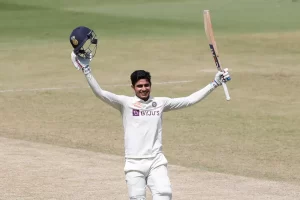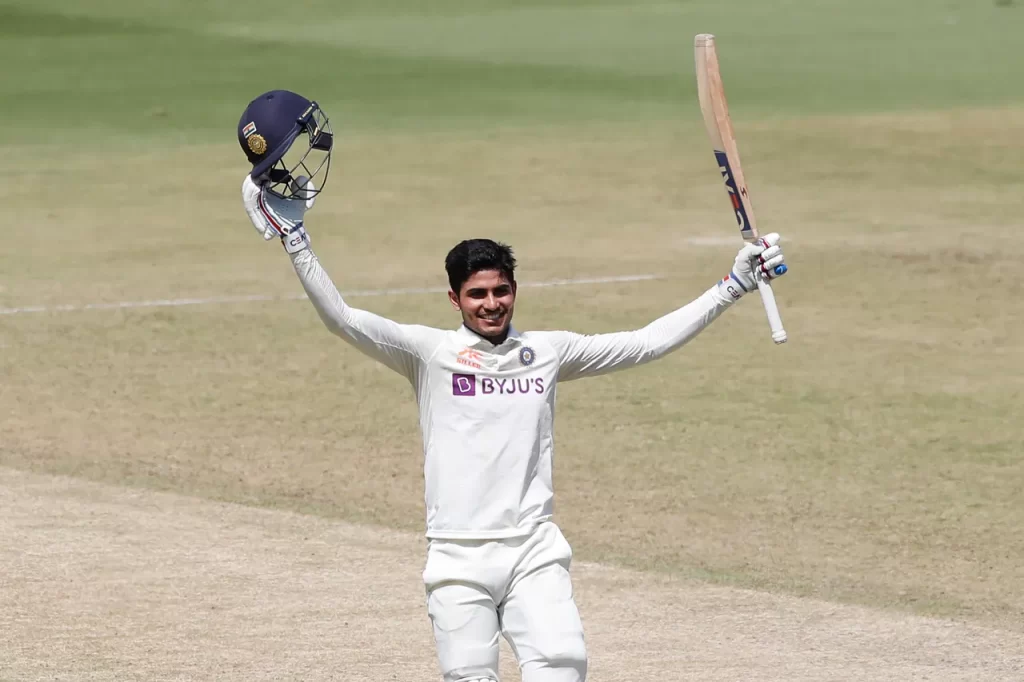
The emergence of a village boy from a farming family is testament to the way cricket has grown in India, but Shubman Gill’s story also illustrates the importance of local heroes.
A generation ago, when French football ruled the world, Adidas came up with an ad that featured a black-and-white picture of a run-down block of apartments. The tagline was “We all come from somewhere.” It was a picture taken in the Marseille neighbourhood where Zinedine Zidane grew up, and it illustrated the power of sporting dreams.
For the longest time, however, where you grew up did matter in Indian cricket. It wasn’t necessarily because of any explicit bias on the part of the selectors. It was just that if you grew up in Mumbai, Delhi, Bangalore, Chennai, Hyderabad or a city of similar size, you generally had access to much better facilities. There was also an organised cricket structure in place, starting at school level and embracing clubs in most neighbourhoods.
If you grew up in a small town or a village, chances were that you didn’t even play on a proper turf pitch until well into your teens, by which time your peers from the bigger cities had already gotten a head start. This started to change only at the turn of the millennium. Zaheer Khan came from Shrirampur in interior Maharashtra, Munaf Patel from Ikhar in Gujarat and Tinu Yohannan from southern Kerala.
Over the past 25 years, with far more money in the BCCI’s coffers, there has been a determined effort to take cricket to every nook and corner of India. And the results show in the composition of the team. No longer is it a team of city boys, or of those from a certain social class. A rickshaw-driver’s son from Hyderabad, Mohammed Siraj, rubs shoulders with a farmer’s boy from Punjab, Shubman Gill. In that sense, the cricket team has become an emblem of everything that modern-day India should aspire to be.
What Gill’s story tells us is also the importance of heroes. Born after India’s disappointing World Cup exit in 1999, Gill was still a toddler when Yuvraj Singh established himself as a household name. He may have first made the headlines with a dazzling 80-ball 84 against Glenn McGrath and friends in Nairobi in 2000, but it was the NatWest Trophy final at Lord’s nearly two years later – when his partnership with Mohammed Kaif, his Under-19 teammate, rescued India from disarray at 146 for 5 – that put him at the forefront of a new generation of talent.
His finest hours came at the 2011 World Cup, a time when Gill was making his way as a schoolboy cricketer in Mohali, right across the state from the district of Fazilka, where he was born. The young prodigy and the World Cup’s man of the tournament had more in common than their Sikh roots. Yuvraj’s father, Yograj Singh, played one Test and six ODIs for India in 1980-81. But the career that he dreamed of never happened. For Lakhwinder Singh, there was no India cap or even the hope of one. Such things just didn’t happen to young men who grew up in remote villages bordering Pakistan.

Both men used their thwarted ambitions to drive their sons. Yograj was a loose cannon in every sense, and stories abound of coaches being grabbed by the throat and worse simply because they let some other kid bat in the nets ahead of Yuvraj. There are no such tales of Lakhwinder, but he did move the family to Mohali so that the eight-year-old Shubman could get access to the opportunities that he himself never had.
Yuvraj starred in both a T20 World Cup win (2007) and the 2011 World Cup triumph, but there’s always a feeling of unfinished business when you look back at his Test career. He played 40 Tests, not a small number, but never really had an extended run in the side. It didn’t help that he came into the team at a time when India’s middle order boasted the names of Rahul Dravid, Sachin Tendulkar, VVS Laxman and Sourav Ganguly. And while there will be those that say he didn’t grab his chances as he should have, he was also never made to feel like an indispensable part of the Test XI.
All three of his hundreds came against Pakistan, each in a hopeless situation where he showcased his talent quite brilliantly, but they came from No.6, a position at which he played 44 of his 62 Test innings. Given that Virender Sehwag was a middle-order batsman converted to an opener, it makes you wonder how seriously the same option was considered with Yuvraj. He opened in just two innings, against Australia at Chennai in 2004, but the experiment was never repeated again.
When you assess how much success the likes of Sehwag, Rohit Sharma and David Warner had when asked to adapt their clean white-ball striking to facing the new, red ball, it’s mystifying that Yuvraj never got that chance. In that sense, Gill’s century in Ahmedabad, his second in Tests, will give Yuvraj immense satisfaction. The younger man had always looked up to him, and they worked closely together during the Covid-19 lockdown in 2020.
If it was an innings against Australia in Kenya that propelled Yuvraj’s career, it was his batting in Australia that first told most cricket fans about Gill’s special talent. After promising cameos in Melbourne and Sydney, Gill made a dazzling 146-ball 91 at the Gabba in Brisbane, to provide the foundation for perhaps India’s greatest Test win.
He hasn’t been a regular since, and only got his chance in this series because of KL Rahul’s lack of form across formats. But such has been Gill’s form in recent months that it’s hard to see how he won’t now open in the World Test Championship final at The Oval in June. It would also be a brave selector that didn’t have him in the squad for the 2023 World Cup.
It isn’t just the range of strokes at Gill’s disposal or the elegance with which he plays them that marks him out. His concentration, highlighted during an ODI double-century against New Zealand in January, and composure are equally impressive for a young man. Virat Kohli, another of those Gill idolises, was also 23 when he made his breakthrough century at Adelaide in January 2012. If he goes on to achieve even half of what his two heroes did, Indian cricket will have been very well served.
We all come from somewhere. And these days, Fazilka isn’t nowhere.




